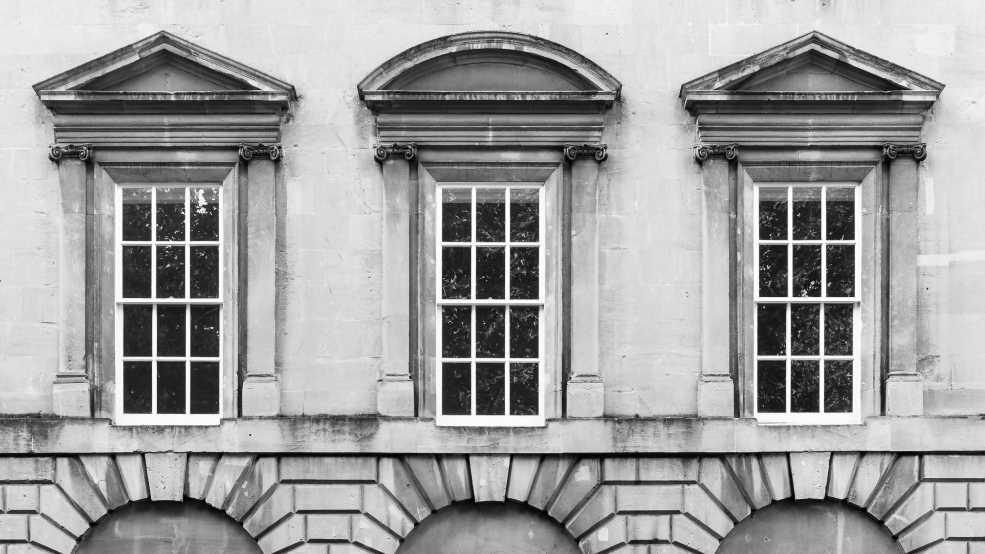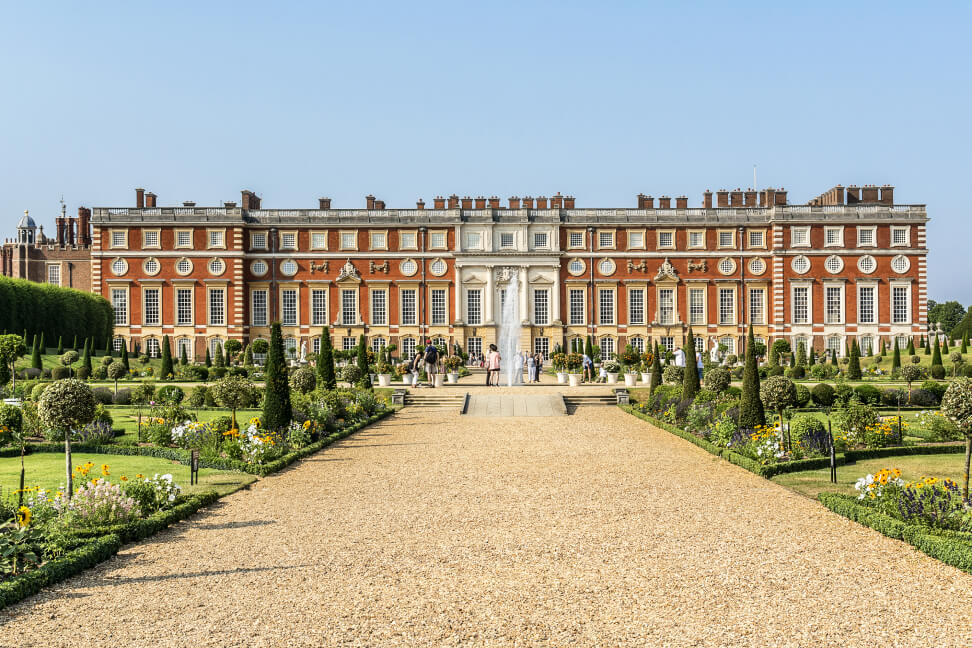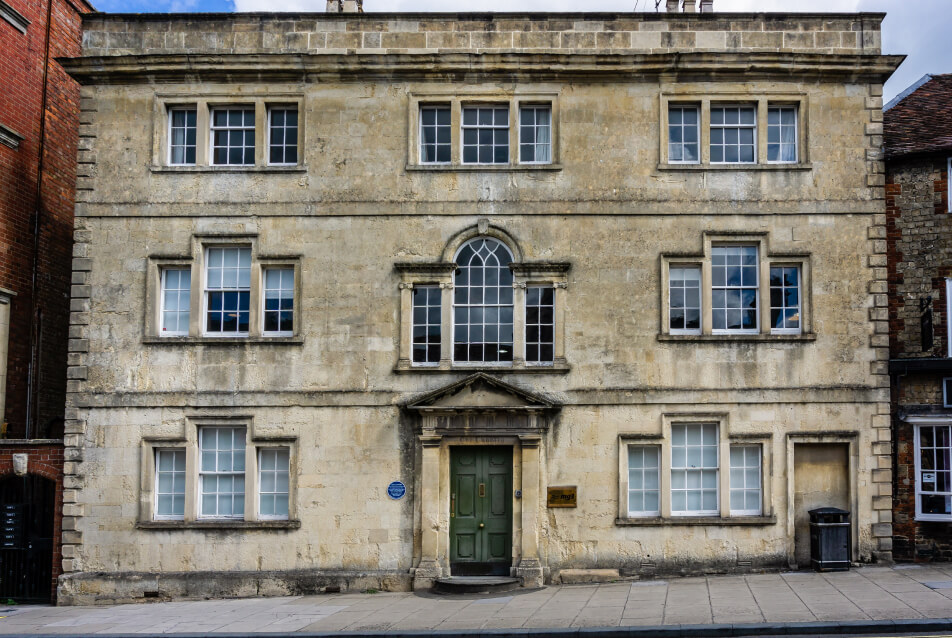
When, where and by whom sash windows were invented is the subject of much speculation amongst architectural historians.
But first, let’s define exactly what we mean by ‘sash windows. We are referring here to vertical sliding windows, which rely on a system of cords, pulleys and weights to hold the window open at the required height.
As opposed to sliding windows which rely on a wooden chock or stay to hold the window open.
You can trace their evolution through horizontal sliding wooden shutters found in medieval times, horizontal sliding windows (sometimes referred to as ‘Yorkshire’ windows), and vertical sliding windows, which had to be chocked open in some way.
Early forms of sash windows with a counterweight, a mechanism to hold them open. But the details of their evolution are less clear.
Three countries could lay claim to their invention:
The Dutch
The French (term ‘sash’ is widely thought to be derived from the French word ‘chassis’ meaning frame)
The English
Sash windows were fitted at Het Loo Palace in Holland around 1685 and described in detail by Englishman Walter Harris in the book ‘A description of his Majesty’s Palace and Gardens at Loo’ published in 1699. They were appearing on buildings in France in the 1690s, but there is no evidence of their use before then. It is the UK that can make the strongest case for inventing and popularising the sash window.
In 1669 a master joiner working on the Queen’s apartments in Whitehall was asked to fix a ‘line and pulley’ to a window. The building accounts for the Lauderdale family between 1670 and 1680, including details for sash windows – as opposed to just sliding windows.
The family were renovating six of their properties, including Thirlestane Castle in Scotland and Ham House in Surrey, the latter having 26 sash windows fitted – perhaps the first major installation of sash windows anywhere.
We perhaps owe something to Sir Christopher Wren for encouraging the wider use of sash windows. He was a surveyor at the Office of Works in London when sash windows began to appear and used them extensively on the new royal palaces at Whitehall, Hampton Court and Kensington. A few at Hampton Court still survive – one reason why we say a well-maintained sash window can last almost indefinitely.

Sash windows with the weights and cords fully encased – like the windows we know today – seem to have developed around the mid-1670s.
Before that, they were accommodated in grooves that ran down the sides of the window frame. The early windows were characterised by a series of small glass panes (often six panes over six panes) supported by wooden glazing bars – rather than single large panes. ‘Crown’ glass was used at this time; that is, glass which is first blown into a hollow globe or crown and then rolled out but hand before being cut to size. The thinnest and best glass was found at the edge of the sheet, and the thickest – more opaque – at the centre.
The term ‘sash’ to describe this type of window seems to have come into common use around the same time.
So, on balance, it looks like English craftsmen joiners have the strongest claim to being creators of the counterbalanced sash window, although exactly who these individuals were and where they worked is lost to history.
The Fire of London and building design
The Great Fire of London in 1666 (coincidentally, the time when the counterbalanced sash window was evolving) and subsequent changes to building regulations had a major impact on the design of London buildings.
Large flush window frames were replaced with smaller recessed frames less liable to catch fire, giving grand Georgian buildings their narrow window frames and distinctive facades. Essentially, recessed windows offered less exposed woodwork to catch fire.
From 1709 window sills at least 4 inches deep had to be constructed in new buildings to provide a barrier to rising flames. Wooden eaves disappeared in new buildings, and roofs became protected behind brick parapets.
Aesthetically, sash windows sat comfortably with the Georgian building design. We should also remember that glazed windows in the late 1600s were not enjoyed by everyone, particularly not the large glazed sash windows were are considering here.
The reason the window tax of 1696 was introduced – in favour of an income tax – was that it would tax more heavily those who were better able to pay. The result of this, and of the later Glass tax in 1745, was to put glazed windows beyond the reach of poorer households. And perhaps to allow people to use windows as a visible sign of their prosperity.

Later developments in sash window design
Georgian craftsmen developed the single sash window – where the upper panel is fixed – into a window where both the bottom and the top halves could be moved. This created a flow of air into a room and provided much better ventilation.
Victorian windows could take advantage of improved commercial glass production, replacing several small panes with fewer larger ones. Commercial glass manufacture also took off in the 1800s when machinery invented for the large-scale rolling of sheet glass began to be used.

Robert Chance was an early pioneer with his companies going on to manufacture the glass for the Great Exhibition of 1851. ‘Horns’ became a common feature on the stiles of sash window frames to strengthen the mortice and tenon joints at the base of the sliding window frame. Larger, thicker glass panes were heavier than those used in early sash windows.
Glass Tax and Window Tax were repealed in 1845 and 1851, respectively, making larger windows more affordable and doubtless more desirable.

The ‘Gothic Revival’ and the ‘Queen Anne Revival’
The Victorian Gothic Revival was popularised by the Arts and Crafts movement and continued up to the 1880s.
It moved away from the order of classical architecture and took its inspiration from the late medieval period. It is often characterised by pointed windows and decorative mouldings above windows.

The period from around 1860 to 1900, called the ‘Queen Anne Revival’ brought a renewed interest in sash windows, in particular, the multi-pane sash windows of the early 1700s.
History of sash windows: Venetian-style windows
‘Venetian style is a generic term to describe windows comprising three glazed sections with a larger sliding sash in the centre. The sash cords from the central window usually run above and down the side of the outer windows.

A wide variety of surviving Venetian-style sash windows can be seen today.
For example, Palladian windows where the centre section is arched above the height of the outer windows; Georgian-style with numerous small panes and glazing bars; and those with masonry pillars between them – effectively creating three separate windows.
Sash windows in the Victorian period evolved into many styles and designs, for example, curved and castellated upper frames, decorative coloured glass, and latticework; in some cases enhanced with decorative and carved masonry.
The 1894 Building Act meant that windows no longer had to be flush with the external facade of a building, leading to an explosion of sash bay windows in the late Victorian and early Edwardian periods.
Windows became more elaborate with decorative multi-pane upper sections. Bays were square – with the sides at 90 degrees to the front of the building; splayed at an angle, or bow – with curved brick or stonework and, in some cases, curved glass.
Adding decorative stonework above and around bays, and other styles of windows, was a popular way of enhancing the facades of Victorian buildings.
Oriel windows also became popular – that is, windows extending from the upper story of a building.
Metal casement windows started to appear after the First World War, aluminium windows became popular after World War Two, and uPVC in the 1960s. But despite changing architectural fashions, new materials and new technology, wooden sash windows have held their own and are arguably just as popular – and relevant – now as they ever were.
From maintaining heritage charm or accentuating modern style to our restoration process and energy efficiency solutions, Scott James sash window specialists look forward to providing your homes and properties with best-fit wooden windows.
References:
The Origin of the Sash Window; Architectural History, January 1983
Read more articles

Common timbers for windows
Common timbers for windows
How to improve the EPC rating of your home
How to improve the EPC rating of your home
Types of sash windows
Types of sash windows